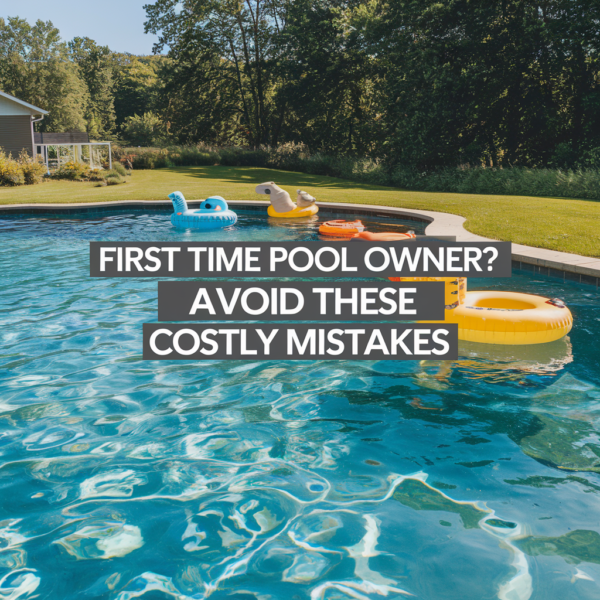
Fixing Low Water Pressure Without Replacing Pipes (Here’s What Worked for Me)
Let me tell you — there’s nothing more frustrating than turning on your shower, expecting a strong stream, and getting a disappointing trickle instead. I went through that for months. Washing dishes took forever, showers weren’t satisfying, and don’t even get me started on trying to fill a bucket with water — it felt like waiting for paint to dry.
Like a lot of homeowners, my first fear was, “Do I have to replace all the pipes in this house?” That sounded like a major project — and a wallet buster. But before I even called a plumber, I decided to dig into some DIY options and learn what I could fix myself.
Turns out, you don’t always need new pipes to boost your water pressure. In fact, most of the time, it’s something much simpler. I tried a few techniques, made some affordable upgrades, and managed to get my home’s water pressure back to where it should be — without tearing into a single wall.
If you’re dealing with low pressure in your sinks, showers, or appliances, let me show you exactly what worked for me. And if you want the complete breakdown, you can jump into the full guide right here 👉 💧 How to fix low water pressure in your house — fast.
First: What “Low Pressure” Actually Feels Like
You know it when you feel it. Low water pressure makes everyday tasks take way longer than they should:
- Showering feels weak — like someone’s spitting on you through a straw
- Filling the tub takes forever
- Your washing machine or dishwasher runs slower
- The kitchen faucet barely rinses off dishes
- Outdoor hose pressure is too low to reach more than 5 feet
If you’re nodding your head to any of that, this article is for you.
Do You Really Need New Pipes? (Probably Not)
Here’s what I realized after talking to a few plumbers and doing my own digging: pipe replacement is usually a last resort, not the first step.
In older homes, yes — galvanized steel pipes can corrode and clog over time. But even then, the fix isn’t always to rip them out right away. You’d be shocked how often low pressure is caused by:
- A clogged aerator
- A partially closed shut-off valve
- A pressure-reducing valve (PRV) that’s out of whack
- Sediment build-up in appliances or water heater
- Municipal supply issues
That’s why it’s always worth checking the simple stuff first.
What I Tried (and What Actually Helped)
Let me walk you through what I did in my own home — starting from easiest to more involved.
1. Cleaned Every Faucet Aerator
This was a quick win. Unscrew the little screen at the tip of your sink faucets and rinse it out. You’d be surprised how many of mine were partially clogged with hard water gunk. One even had a tiny pebble in it (seriously).
After I cleaned them all, the difference in the kitchen faucet pressure was immediate.
2. Checked the Main Shut-Off Valve
I found my home’s main water shut-off valve near the front of the house. Sure enough, it was turned just a hair off from fully open. That tiny difference was restricting the flow into the whole house.
I turned it fully open and boom — my hose pressure outside improved almost instantly.
3. Adjusted the Pressure-Reducing Valve (PRV)
Many homes have a PRV where the water line enters the house. It keeps pressure from getting too high — but sometimes it’s too low.
Mine had a bolt on top that I could turn with a wrench. A half-turn clockwise, and my whole house pressure ticked up just enough to feel right — without risking damage to appliances.
Check your own, and follow the settings carefully. And if you’re unsure what you’re looking at, I show exactly what to look for here 👉 🔧 My full pressure fix walkthrough.
4. Drained and Flushed the Water Heater
Over time, sediment builds up at the bottom of your tank and can reduce pressure to hot water lines. I drained and flushed my water heater (took maybe 30 minutes), and noticed better hot water pressure in the shower the next day.
If your hot water pressure is worse than cold, this might be your fix.
5. Installed a High-Pressure Showerhead
Game-changer. My old showerhead looked fine but was majorly restricting flow. I replaced it with a high-efficiency, high-pressure model — and it made every shower feel like a hotel spa.
Some models are designed to amplify flow without actually increasing water use. Double win.
Need a solid recommendation? I link my top pick in the full article 👉 🚿 See what I used for better showers.
How to Know If the Problem Is Inside or Outside Your House
This was something I had to figure out early on.
Here’s how I tested it:
- Turned on an outdoor hose connected before the house water line
- Then tested pressure inside
If outdoor pressure is strong but indoor pressure is weak — the issue is inside your home (probably aerators, valves, heater, etc.).
If both are weak? It might be your city supply or a whole-home valve issue.
Could the Pipes Still Be the Problem?
Yes — but it’s rare unless:
- Your home has galvanized steel pipes over 50 years old
- You’ve noticed rusty water or metallic smell
- You’re getting brownish water from multiple fixtures
- You hear rattling or knocking pipes when water runs
- Every fix you’ve tried above had zero impact
In that case, it’s smart to get a plumber’s opinion. But even then, some pros offer pipe descaling or internal coating options that don’t involve a full replacement.
Other Quick Tips That Can Help
✅ Replace Old Shutoff Valves
The small twist valves under sinks and toilets often get corroded and restrict flow. Replacing them with quarter-turn valves made a noticeable difference in two of my sinks.
✅ Check for Leaks or Partially Closed Appliance Valves
My washing machine line was partially closed from the last service visit. Opening it fully brought my fill time from 12 minutes down to 6.
✅ Add a Whole House Water Filter (If Needed)
If you’ve got heavy sediment or mineral-rich water, a whole-house filter can stop gunk from clogging your lines in the first place.
Common Questions I Had (and You Might Too)
How do I know my home’s PSI?
You can get a cheap water pressure gauge from any hardware store. Attach it to an outdoor spigot and check. Normal home pressure is between 45–80 PSI. Mine was at 38 — now it sits comfortably around 60.
Is high water pressure bad?
Too much pressure (over 80 PSI) can damage pipes, water heaters, and appliances. You want it strong, but not excessive.
What about water softeners — can they affect pressure?
Yes! If your softener is clogged or needs maintenance, it can reduce water flow. I bypassed mine temporarily to test — no difference in my case, but worth checking if you have one.
So… Should You Replace Pipes for Low Pressure?
Not unless you’ve ruled everything else out.
In most cases, you can restore strong, reliable water pressure with just a few smart fixes:
- Clean aerators
- Adjust the PRV
- Flush your water heater
- Upgrade fixtures
- Check valves
- Use better showerheads
All of these worked for me — and none of them involved ripping out walls or paying thousands in plumbing work.
Ready to see exactly what I did, step by step? 👉 💪 Fix your water pressure without replacing pipes
As an Amazon Associate we earn from qualifying purchases through some links in our articles.



